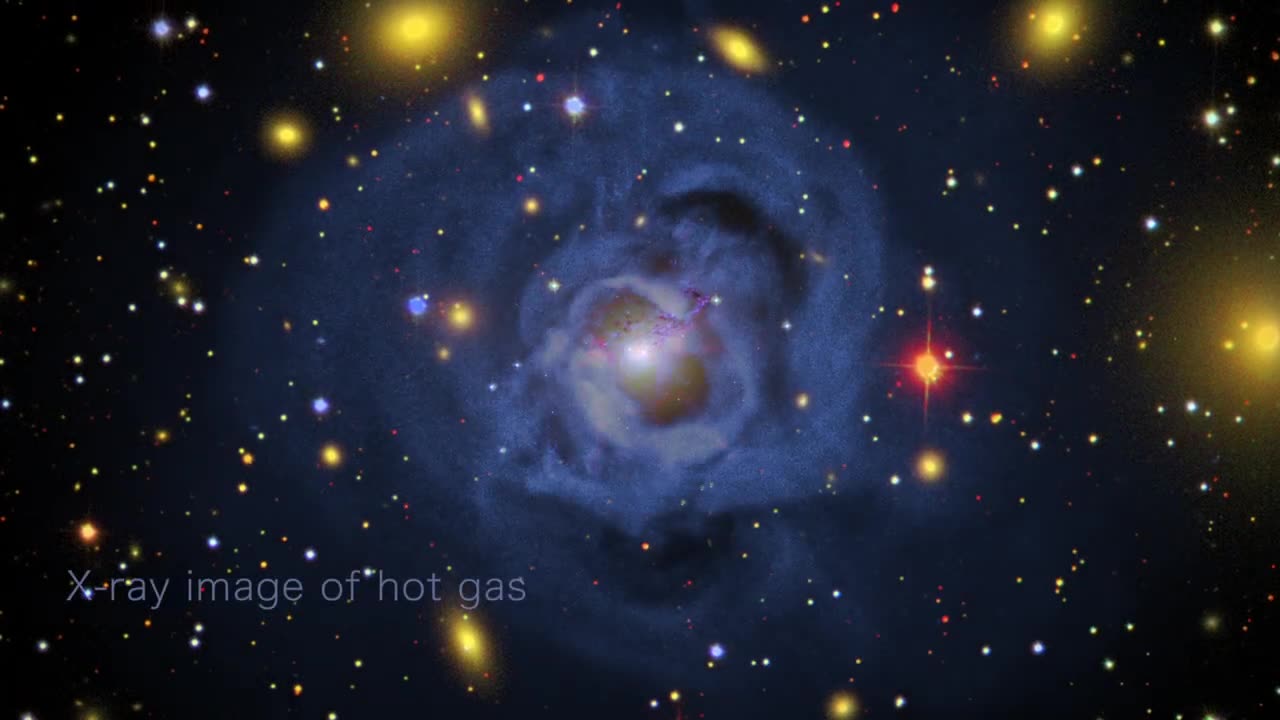Premium Only Content

XRISM Mission Captures Unmatched Data With Just 36 Pixels
At a time when phone cameras are capable of taking snapshots with millions of pixels, an instrument on the Japan-led XRISM (X-ray Imaging and Spectroscopy Mission) captures revolutionary science with just 36 of them.
That may sound impossible, but it’s true.
XRISM (pronounced “crism”) is led by JAXA (Japan Aerospace Exploration Agency) in collaboration with NASA, along with contributions from ESA (European Space Agency). It launched into orbit last September and has been scrutinizing the cosmos ever since. The mission detects “soft” X-rays, which have energies up to 5,000 times greater than visible light. It will probe the universe’s hottest regions, largest structures, and objects with the strongest gravity, like supermassive black holes in the cores of distant galaxies.
XRISM accomplishes this with an instrument named Resolve. Resolve's detector takes the temperature of each X-ray that strikes it. Astronomers call Resolve a microcalorimeter spectrometer because each of its 36 pixels measures the tiny amount of heat delivered by each incoming X-ray. This lets astronomers see the chemical fingerprints of elements making up the sources in unprecedented detail.
In order to accomplish this, the entire detector must be chilled to 459.58 degrees below zero Fahrenheit (minus 273.1 degrees Celsius), just a whisker above absolute zero.
The instrument is so precise it can detect the motions of elements within a target, effectively providing a 3D view. Gas moving toward us glows at slightly higher energies than normal, while gas moving away from us emits slightly lower energies. This will, for example, allow scientists to better understand the flow of hot gas within clusters of galaxies and to track the movement of different elements in the debris of supernova explosions.
Resolve is taking astronomers into a new era of cosmic exploration — and with only three-dozen pixels.
-
 LIVE
LIVE
LFA TV
14 hours agoLIVE & BREAKING NEWS! | THURSDAY 12/04/25
4,053 watching -
 59:25
59:25
VINCE
3 hours agoFINALLY: Jan 6th Pipe Bomber Arrested? | Episode 181 - 12/04/25 VINCE
161K128 -
 DVR
DVR
Chad Prather
2 hours agoCandace Owens ACCEPTS TPUSA’s Debate Invitation + Dem Rep Instructs Military To REMOVE Trump?!
38K12 -
 LIVE
LIVE
Grant Stinchfield
1 hour agoBiden’s Inner Circle Cracks! It's the Presidency That Wasn’t!
161 watching -
 1:32:47
1:32:47
Graham Allen
4 hours agoCandace Owens vs TPUSA! It’s Time To End This Before It Destroys Everything Charlie Fought For!
126K557 -
 2:02:57
2:02:57
Badlands Media
11 hours agoBadlands Daily: 12/4/25
32.2K4 -
 2:14:23
2:14:23
Matt Kohrs
14 hours agoLive Trading Stock Market Open (Futures & Options) || The Matt Kohrs Show
22.8K -
 2:59:21
2:59:21
Wendy Bell Radio
7 hours agoEnemy of the State
58.8K80 -
 LIVE
LIVE
LadyDesireeMusic
2 hours ago $0.62 earnedLive Piano Music & Convo
124 watching -
 22:53
22:53
Bearing
5 hours agoABSOLUTE KAREN ANNIHILATION!! 💥 Kaceytron VS Ethan Klein (Lex Jewthor) 💀
20.6K9